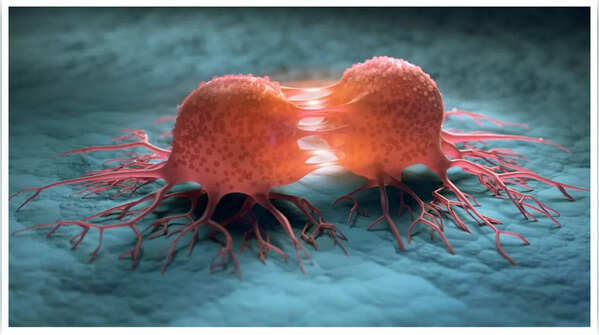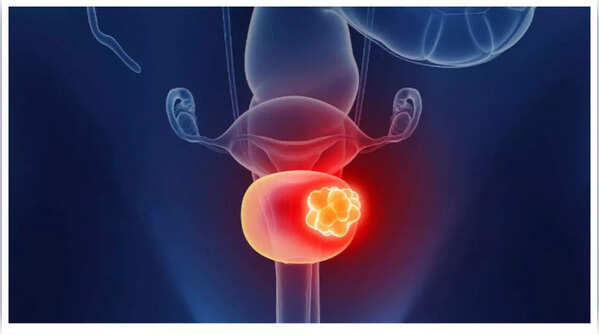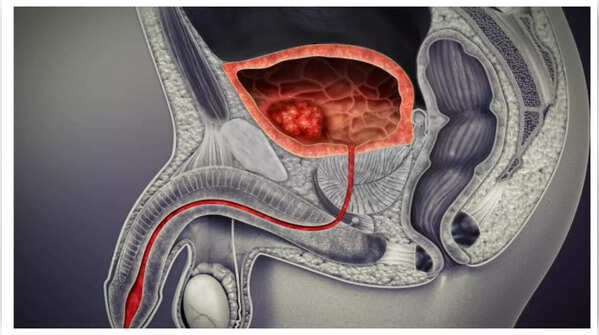Bladder cancer, characterized by the formation of cancerous cells within the bladder tissues, is more prevalent in men over the age of 55. While blood in the urine is often cited as the primary and most critical indicator, subtle symptoms can easily be overlooked in the initial stages. Recognizing these less obvious signs is crucial for early detection and treatment.

An early indicator of bladder cancer can be a noticeable increase in the frequency of urination. This may manifest as needing to urinate more often than usual, even without increased fluid intake, or experiencing a sudden, intense urge to urinate, even when the bladder isn't full. This symptom is often mistaken for a urinary tract infection or an overactive bladder.

If these changes persist for weeks or are accompanied by other symptoms, seeking medical evaluation is crucial, as they may indicate irritation or growths within the bladder requiring medical intervention.
Experiencing pain or a burning sensation while urinating can often be attributed to common infections like UTIs. However, it's important to note that bladder cancer can also cause inflammation or irritation of the bladder lining, resulting in discomfort during urination.

Unlike typical UTIs that respond well to antibiotics, pain associated with bladder cancer may persist or recur repeatedly after treatment. If you experience painful urination along with other symptoms like blood in the urine or frequent urination, consulting a doctor is essential.
Bladder cancer can sometimes create a persistent sensation of needing to urinate immediately, even when the bladder is nearly empty. This frustrating sensation often persists even after using the bathroom and is frequently mistaken for a UTI due to the similarity in symptoms.

This occurs because tumors or abnormal growths in the bladder can irritate nerves or reduce bladder capacity, sending false signals to the brain. If this feeling continues or worsens, it should be promptly evaluated, as it may indicate bladder abnormalities, including cancer.
While early-stage bladder cancer may not cause pain, as the disease progresses, discomfort or aching may develop in the lower back or pelvic area. This pain is often described as dull and persistent and may be mistaken for muscle strain or other common conditions.

Pain in these areas can indicate that the cancer has grown deeper into the bladder wall or surrounding tissues. If you experience unexplained lower back or pelvic pain along with urinary symptoms, it’s crucial not to disregard these signs.
While visible blood in the urine is a well-known symptom, the urine may sometimes appear normal but still contain small amounts of blood detectable only through lab tests. This condition, known as microscopic hematuria, presents as an "off color" of urine rather than a distinct pink or red hue.

Because it lacks obvious signs like red or pink urine, microscopic blood in the urine often goes unnoticed unless a urine test is performed for other reasons. Individuals with risk factors such as smoking, exposure to harmful chemicals, or a family history of bladder cancer should undergo regular urine tests to facilitate early detection of these hidden signs.
Sources: Mayo Clinic, Cleveland Clinic, The National Cancer Institute
Newer articles
Older articles
 Vitamin D Could Slash Tooth Decay Risk by 50%, Study Suggests
Vitamin D Could Slash Tooth Decay Risk by 50%, Study Suggests
 Indian Cricket Star Mukesh Kumar and Wife Divya Singh Announce Birth of Son
Indian Cricket Star Mukesh Kumar and Wife Divya Singh Announce Birth of Son
 Shubman Gill's Captaincy Under Fire: Bold Calls Needed After England Test Defeat
Shubman Gill's Captaincy Under Fire: Bold Calls Needed After England Test Defeat
 Microsoft Aims for Foldable Redemption with Novel Hinge Design to Rival iPhone and Android
Microsoft Aims for Foldable Redemption with Novel Hinge Design to Rival iPhone and Android
 Popular Finance YouTuber's Account Hacked, Bitcoin Scam Promoted: Security Lessons Learned
Popular Finance YouTuber's Account Hacked, Bitcoin Scam Promoted: Security Lessons Learned
 Esha Gupta Breaks Silence on Hardik Pandya Romance Rumors: 'We Were Just Talking'
Esha Gupta Breaks Silence on Hardik Pandya Romance Rumors: 'We Were Just Talking'
 Hollywood's Love Affair with India: Iconic Film Locations Revealed
Hollywood's Love Affair with India: Iconic Film Locations Revealed
 Rishabh Pant Aims to Surpass Virat Kohli in Test Century Tally During England Series
Rishabh Pant Aims to Surpass Virat Kohli in Test Century Tally During England Series
 Prithvi Shaw Credits Sachin Tendulkar's Guidance for Career Revival After Setbacks
Prithvi Shaw Credits Sachin Tendulkar's Guidance for Career Revival After Setbacks
 Ashada Gupt Navratri 2025: Unveiling Dates, Timings, Significance & Secret Rituals
Ashada Gupt Navratri 2025: Unveiling Dates, Timings, Significance & Secret Rituals